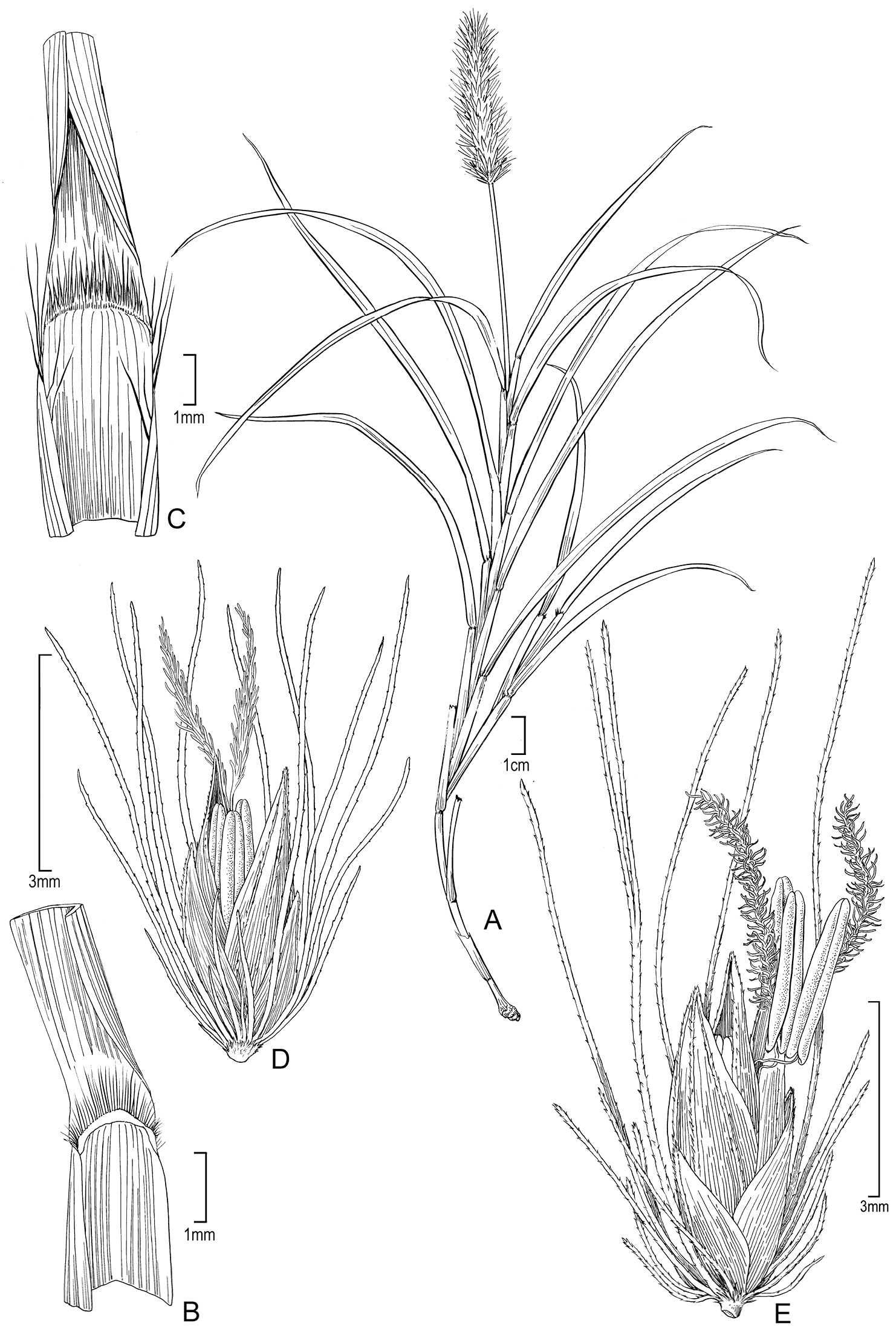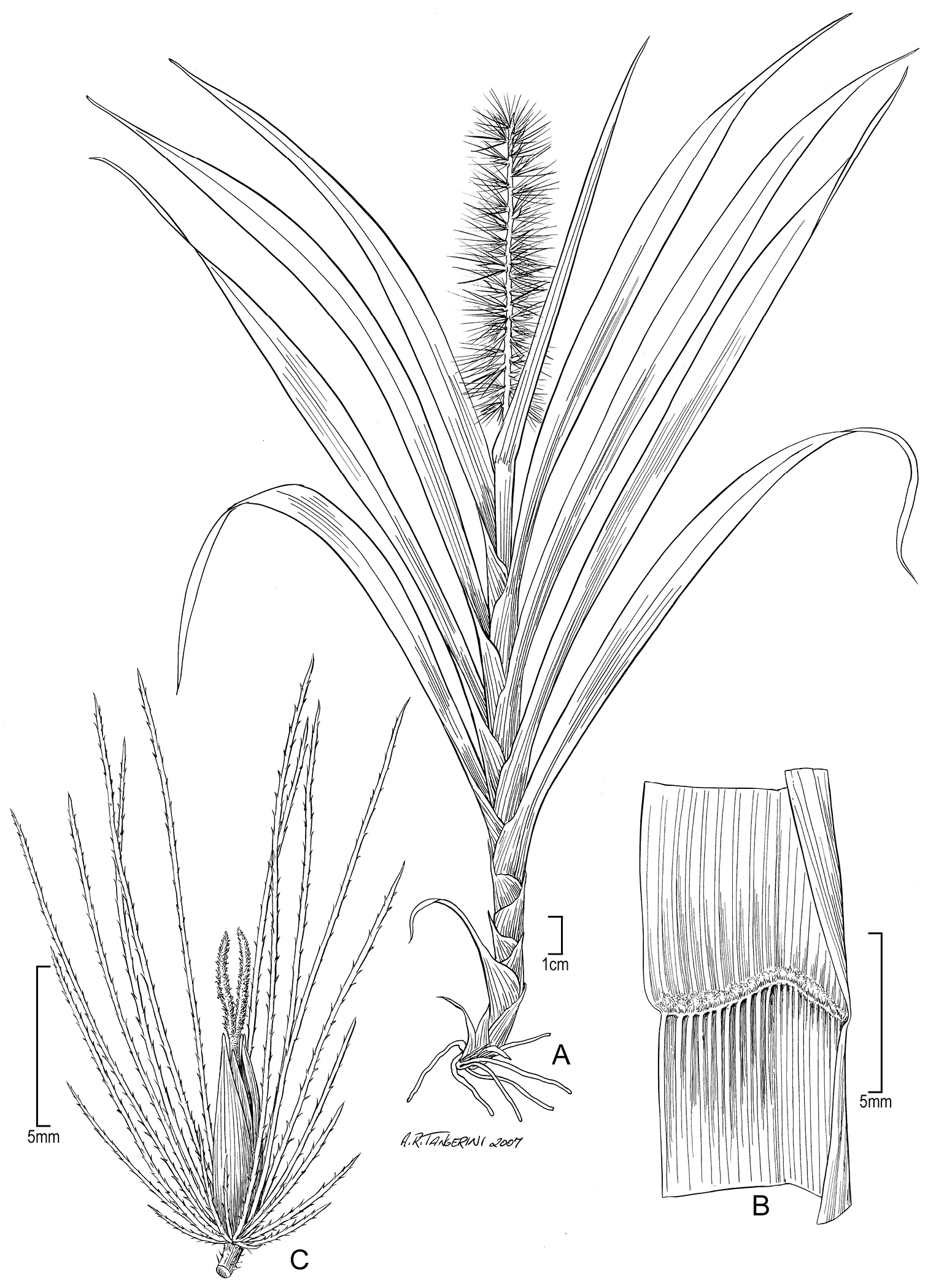






(C) 2013 Michael W. Tornabene. This is an open access article distributed under the terms of the Creative Commons Attribution License 3.0 (CC-BY), which permits unrestricted use, distribution, and reproduction in any medium, provided the original author and source are credited.
For reference, use of the paginated PDF or printed version of this article is recommended.
Citation: Tornabene MW, Wagner WL (2013) New combinations for Pacific endemic species: Marquesan Poaceae, and Micronesian Myrtaceae. PhytoKeys 28: 1–7. doi: 10.3897/phytokeys.28.6139
As part of the preparation for a comprehensive online flora of Pacific oceanic islands, numerous taxonomic changes have been necessary, primarily due to a new wealth of global molecular phylogenetic studies on genera that include Pacific islands species. In order to compile an accurate checklist of the Pacific island flora with up-to-date taxonomies, we are moving several species to their currently accepted genera. Two Marquesan Pennisetum Rich. are transferred to Cenchrus L. with the new combinations Cenchrus articularis (Trin.) M. Tornabene & W.L. Wagner, and Cenchrus henryanus (F. Br.) M. Tornabene & W.L. Wagner. A key to Marquesas Cenchrus is also provided to differentiate the two species. Additionally, one species of Eugenia L. is transferred to Syzygium Gaertn. with the new combination Syzygium stelechanthoides (Kaneh.) M. Tornabene & W.L. Wagner in accord with the aforementioned studies.
Marquesas Islands, Micronesia, Pacific, Cenchrus, Syzygium, Pennisetum, Eugenia, Myrtaceae, Poaceae
A recent comprehensive molecular study of the genera Cenchrus, Pennisetum, and Odontelytrum by
urn:lsid:ipni.org:names:77133592-1
http://species-id.net/wiki/Cenchrus_articularis
Fig. 1Marquesas Islands, common on shore cliffs on the islands of Hatutaa, Nuku Hiva, Ua Huka, Hiva Oa, and Fatu Hiva, 0–900 m.
During research on the type of Pennisetum articulare Trin., an important discrepancy became apparent. The specimen has always been assumed to have been collected by Kyber who was on numerous expeditions with Ferdinand von Wrangel between 1821 and 1827 (
After an extensive review of the relevant literature, which revealed that Ferdinand von Wrangel was in the Marquesas Islands in mid-March 1818 with the Danish botanist Marten Wormskjold (
Cenchrus articularis (Trin.) M. Tornabene & W.L. Wagner A Habit, Perlman 10069 (US) B Ligule, Wood 10133 (US) C Ligule, Florence 9421 (US) D Spikelet with one floret, Wood 10112 (US) E Spikelet with two florets, Wood 10112 (US). Illustration by Alice Tangerini.
urn:lsid:ipni.org:names:77133590-1
http://species-id.net/wiki/Cenchrus_henryanus
Fig. 2Endemic to Marquesas Islands on Nuku Hiva and Fatu Hiva, from 800–1130 m. Cenchrus henryanus is known from only a single collection from Fatu Hiva.
Cenchrus henryanus (F. Br.) M. Tornabene & W.L. Wagner A Habit B Ligule C spikelet. Drawn from Perlman 10106 (US). Illustration by Alice Tangerini.
| 1 | Longest Ligule hairs 1 (–1.5) mm; leaf-blades slender (but up 1.2 cm wide at the broadest point which is well above the base); longest bristles below the spikelets less than 1–1.3 cm long; upper mid-culm internodes often ca. 3 cm long | Cenchrus articulare |
| 2 | Ligule hairs 0–0.5 mm; leaf-blades usually 1 cm wide (at least at the base of the leaf); longer bristles below the spikelets (1.5–) 1.7—2 cm long; upper mid-culm internodes contracted, mostly 2–2.5 (–3) cm long | Cenchrus henryanus |
According to multiple recent molecular studies examining the relationships between species in one of the major lineages within the Myrtaceae, the Syzygium group, one species of endemic Micronesian Eugenia L. should be placed in Syzygium P. Browne (
urn:lsid:ipni.org:names:77133591-1
http://species-id.net/wiki/Syzygium_stelechanthoides
Caroline Islands, known only from the island of Kosrae.
In the recently published World Checklist of Myrtaceae, Eugenia stelechanthoides Kaneh. was placed into synonymy with Syzygium stelechantha (Diels) Glassman. In his original publication, Kanehira acknowledges the close relationship of the two species, but also notes two major differences that correlate with distribution. Specimens from Kosrae (Syzygium stelechanthoides) have much larger leaves, as well as winged branchlets, while the specimens from Pohnpei (Syzygium stelechantha) do not. Upon examination of specimens of both species from Pohnpei, and Kosrae, as well as additional islands in the Caroline archipelago at US, only specimens from Kosrae exhibited the characteristics of Syzygium stelechanthoides described by Kanehira. Therefore, until a more in depth study can be performed on the Syzygium of the area, we find it best to maintain Syzygium stelechanthoides as a separate species.
We would like to thank Robert Soreng for his generous contribution of effort and expertise to create the key for the Cenchrus species, as well as the valuable insights he provided on the mysterious origin of the Pennisetum articulare holotype, and review comments by John Ricketson and Fred Barrie. We thank Alice Tangerini for her fine work preparing the illustrations.

